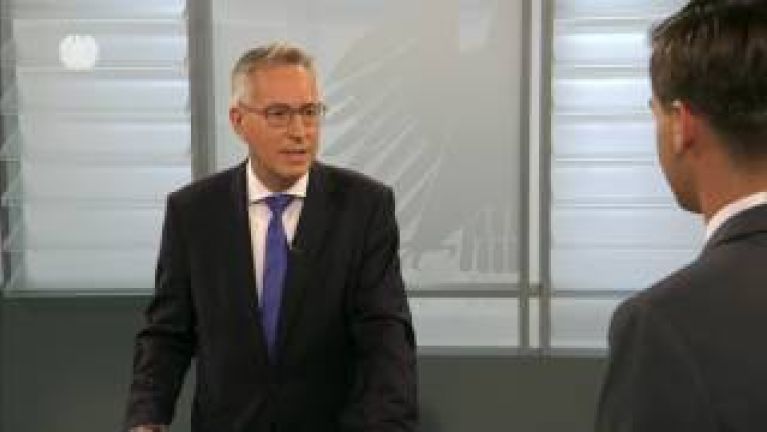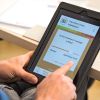The mathematics of election night
How does my x mark become an election result in the Bundestag election? Federal Returning Officer Dieter Sarreither explains.

Germany. What feelings do I associate with election day 24 September 2017? Among others, of course a great tension. As Federal Returning Officer I’m responsible for implementing the 2017 Bundestag election. We have only one chance on this day. But of course we’ve been preparing everything for weeks so that nothing goes wrong and I can already announce the preliminary result on election night. That’s the main thing. The citizens and the media are waiting for it. For this purpose there are about 200 staff in action at two data centres in Wiesbaden und Berlin.
Over the last few weeks we’ve already played through the Bundestag election exactly, on the basis of fictitious numbers. I can’t say of course who wins.
I studied mathematics – but to be able to understand the results on election day higher mathematics isn’t needed. Addition, subtraction, multiplication and division suffice. What makes the whole thing a bit more complicated are the rules about what must be multiplied and what divided, when we take the minimum and when the maximum. We’ve installed the algorithm prescribed by law and will track it parallel by our own calculations on election night. We have to be sure the results of our electoral system are accurate. To this end, over the last few weeks we’ve already played through the Bundestag election exactly, on the basis of fictitious numbers – with equalizing mandates, seat distribution and the corresponding voter turnout. I can’t say of course who wins. We have no visionary calculations. Everything is possible.
Dieses YouTube-Video kann in einem neuen Tab abgespielt werden
YouTube öffnenThird party content
We use YouTube to embed content that may collect data about your activity. Please review the details and accept the service to see this content.
Open consent formThe reports are conveyed either by telephone or via encrypted networks of the Federal Government, so they’re safeguarded against attacks. Then comes the most exciting part: the seat distribution. The results of the first votes are clear early on, who’s won as a direct candidate in the respective constituencies. More decisive, however, are the second votes. They determine the proportion and share of seats to which a party is entitled. As soon as all the numbers are in, we can say which party with which national list has won how many seats and which candidates will therefore enter the Bundestag – at least as a preliminary result.
No chance for fake news
Citizens are already are already aware of fake news on the Net and of possibly hacked news pages. We appeal to everyone not to believe every scrap of information they may hear – for example, that the polling stations are shut – and instead to do their own research. The counting of the votes is public and transparent, the marking of the ballot with a pencil or a ballpoint pen traceable and protected against manipulations.
Dieses YouTube-Video kann in einem neuen Tab abgespielt werden
YouTube öffnenThird party content
We use YouTube to embed content that may collect data about your activity. Please review the details and accept the service to see this content.
Open consent formAbout 14 days after the election, the Federal Electoral Commission meets again and establishes the final election result on the basis of the records of election night. Once that’s done, the rest is up to the politicians. The Bundestag must be constituted and it will probably be a very hectic time for politicians. This I observe this from afar; it’s no longer part of my job.
Protocol: Sarah Kanning


